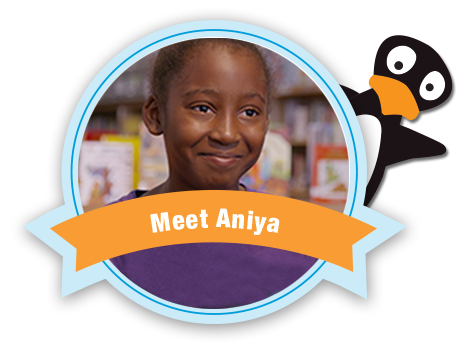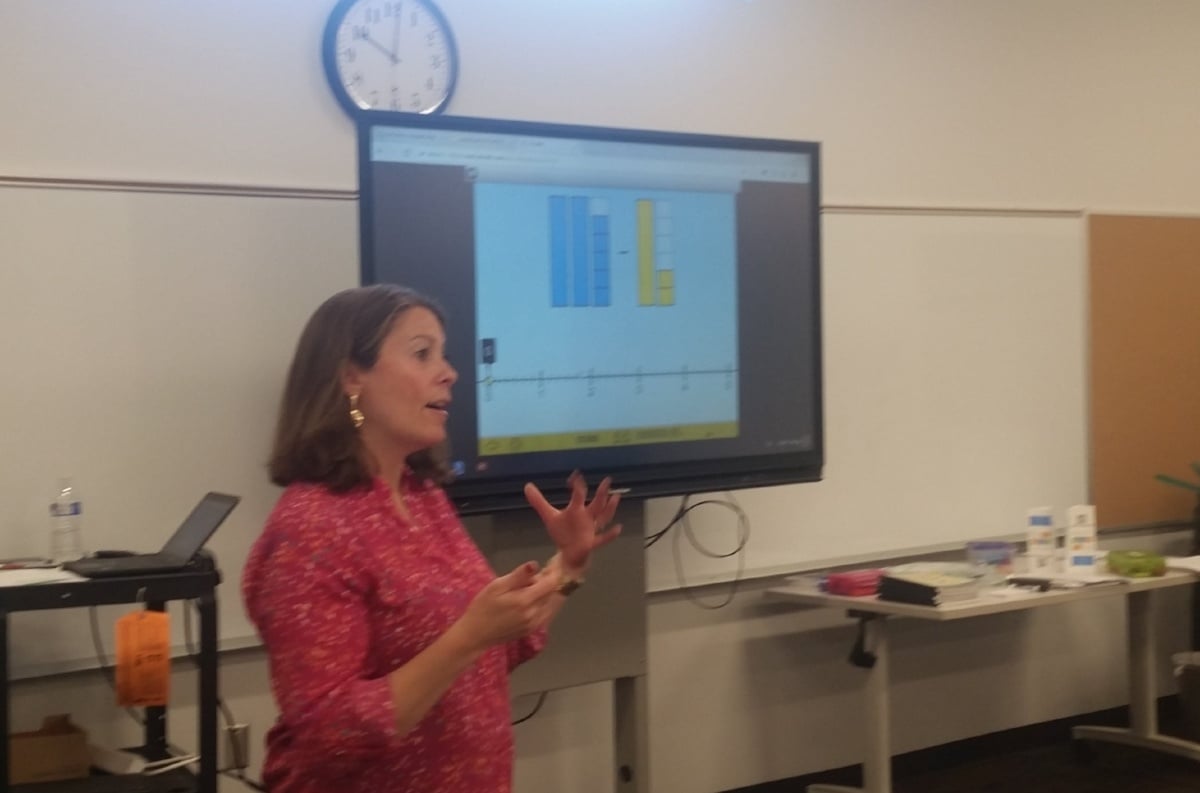Programs
Experience
Services
Educator Topics
Subscribe to the Newsletter
Subscribe to the Blog
Conceptual understanding in math is the creation of a robust framework representing the numerous and interwoven relationships between mathematical ideas, patterns, and procedures. This framework can be used to coherently integrate new knowledge and solve unfamiliar problems.
From a neuroscience perspective, conceptual learning requires building schemas. Schemas are all about connections, and building schemas of mathematical concepts gives students the ability to solve problems they haven’t seen before.
In this episode of the Inside Our MINDs podcast, Director of ST Math Content Ki Karou delves into how the brain learns, and what kinds of instruction can facilitate schema building for conceptual understanding.
You can listen to the episode in the player.
In this episode of the Inside Our MINDs podcast, Director of ST Math Content Ki Karou delves into how the brain learns, and what kinds of instruction can facilitate schema building for conceptual understanding.
You can listen to the episode in the player below.
Neuroscience offers great insight into how people build an understanding of the world around them, from infancy all the way through adulthood. When developing a deep understanding of mathematical concepts, there are four neural subsystems that work together:
A schema can be conceived as a scaffold, a blueprint, and a representation that describes an object, a string of events, or an idea, but also feelings, and essentially anything that can be experienced.
In math education, we are especially interested in establishing schemas to reduce cognitive load. For example, a schema for fractions can allow students to automatically manipulate numbers in fraction space, without investing precious brain power every time a fraction is encountered. Instead of spending brain power trying to remember how fractions work, students can focus on solving other problems for which a schema has not yet been established.
Another way of thinking about engaging the four neural subsystems for deeper learning is something we refer to as the learning path. Activities that allow for students to follow these three steps can help them develop conceptual mastery:
What are the most common ingredients in math edtech programs? What combination of ingredients should you be looking for? Well, that depends on what you're looking to accomplish. Whether you are looking for extra practice, direct instruction or conceptual learning, this downloadable rubric can help you evaluate the content of edtech programs to ensure you have a recipe for success.
Use Math to Add INTRIGUE
-Ask "How can math add an interesting twist on the activity?"
-Put math at the core of the activity--math is not an add-on
INTERACT With Math in a New Way
-Go beyond paper and pencil
-Create an experience through which students dynamically interact with math
Use Math to INFORM Decisions
-Don't start and stop the math at the calculation
-Allow math to be a tool for the decisions you are naturally making in the experience
Remember: Learning should be active and rich with decision making. Use math to make decisions and solve new problems creatively!
The visual instructional approach of ST Math builds a deep conceptual understanding of math through rigorous learning and creative problem solving. Through tantalizingly tricky puzzles, students are actively engaged, motivated and challenged toward higher achievement. Over the course of a school year, students solve well over 5,000 interactive puzzles, each one providing animated feedback that adapts to a student’s response. This informative feedback offers an intrinsically motivating learning experience that shows students the mathematical consequences of each answer. We perceive the world, perform actions, perceive the results, and adjust our actions in response...all in a cycle that repeats again and again. This forms the basis of our brain’s ability to learn, think and solve problems.

"What I like about ST Math is that you can learn new ways to do things and you can also have fun at the same time. It’s important to learn math because when you grow up, math is going to be all around you. Math is really important in the world."
At Jacks Valley Elementary in Nevada, educators were looking for ways to move beyond math drills and fact memorization. Since bringing ST Math into Jacks Valley, teachers have seen students’ anxiety go down, and their confidence go up. Read all about how students at Jacks Valley are succeeding with ST Math here.
Educator Meagan Erwin has been an elementary teacher for 20 years. Her students use ST Math, and Megan has leveraged their experience with the program to develop a 90-minute math model that helps all of her students build deep conceptual understanding.

Educator Meagan Erwin has been an elementary teacher for 20 years. Her students use ST Math, and Megan has leveraged their experience with the program to develop a 90-minute math model that helps all of her students build deep conceptual understanding:
Educator Meagan Erwin has been an elementary teacher for 20 years. Her students use ST Math, and Megan has leveraged their experience with the program to develop a 90-minute math model that helps all of her students build deep conceptual understanding:
![]()
Warm-up
(10-15 min):
Use spiral review questions and math talks to get students problem solving right away. Spiral review consists of bringing up questions from previously learned concepts periodically. Math talks are short questions that are fairly direct, but also invite some discussion.
![]()
Open-ending problem solving
(20-25 min):
Students each have their own math journal, where they cut and glue in the problem of the day. Students spend a good amount of time working on this one problem to build persistence and dive deep into the topic of the day.
![]()
Focus lesson
(10-15 min):
The focus lesson could be a lesson from their math curriculum textbook or a puzzle talk from ST Math. Puzzle talks build confidence, increase number sense, and flexibility with numbers.
![]()
Small group
intervention
(up to 20 min):
During small group intervention time, most students are working at their own pace on ST Math, while the teacher pulls specific groups of students for intervention.
You can read more on Meagan's 90-minute math class structure on the MIND blog.
ST Math is a visual instructional program that builds a deep conceptual understanding of math through rigorous learning and creative problem solving to engage, motivate and challenge PreK-8 students toward higher achievement.
In ST Math, over 200 visual games create a unique pathway of interconnected content challenges to provide differentiated instruction for individual students, regardless of skill level.
Students take their own path to mastery. In order to move to new levels, they must demonstrate mastery at each stage of the objective. To ensure all students develop deep mathematical understanding, the program personalizes their exposure to each concept according to their unique needs. As a result, students are empowered to work through any obstacle as they make their own pathway to mastery.
“Our end-all, be-all goal is individualized, personalized, differentiated instruction. ST Math allows students to work at their own pace. It allows student to fill in some of those gaps that may have been missed in previous courses.”
“Taking teaching to the next level is really all about individualizing learning for all students. One way that we do that here at Marlboro Township is purposeful use of our digital tools. And ST Math is one of our digital tools that fills an important gap, which other digital tools do not.”